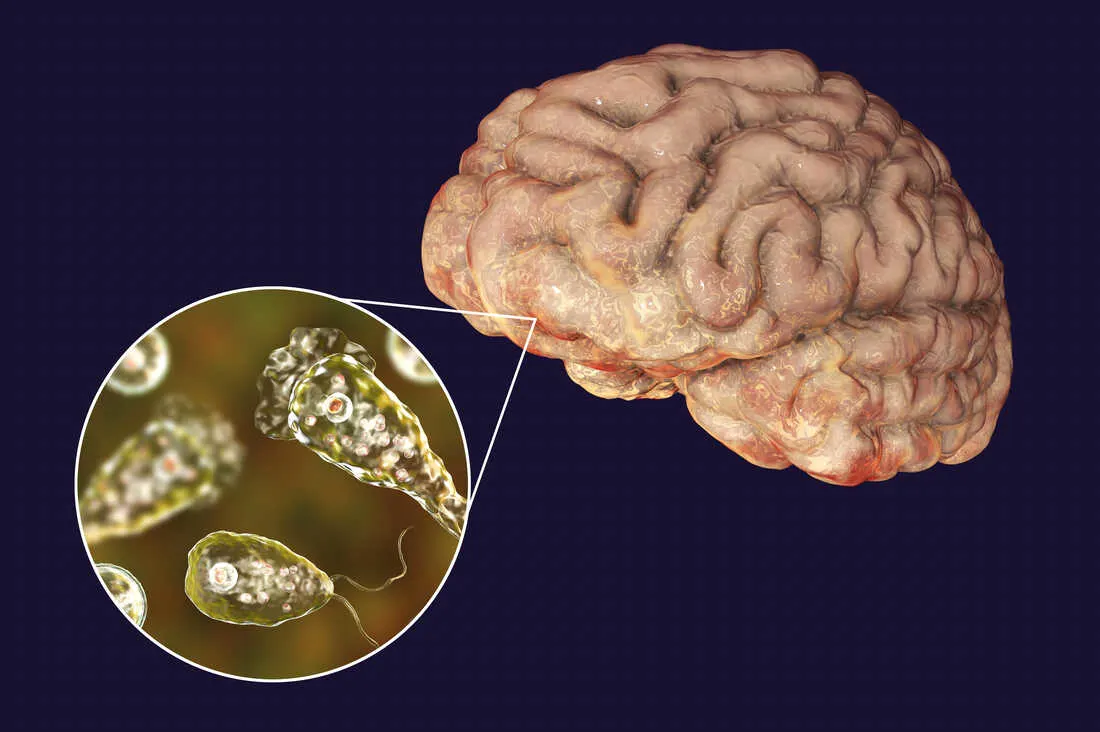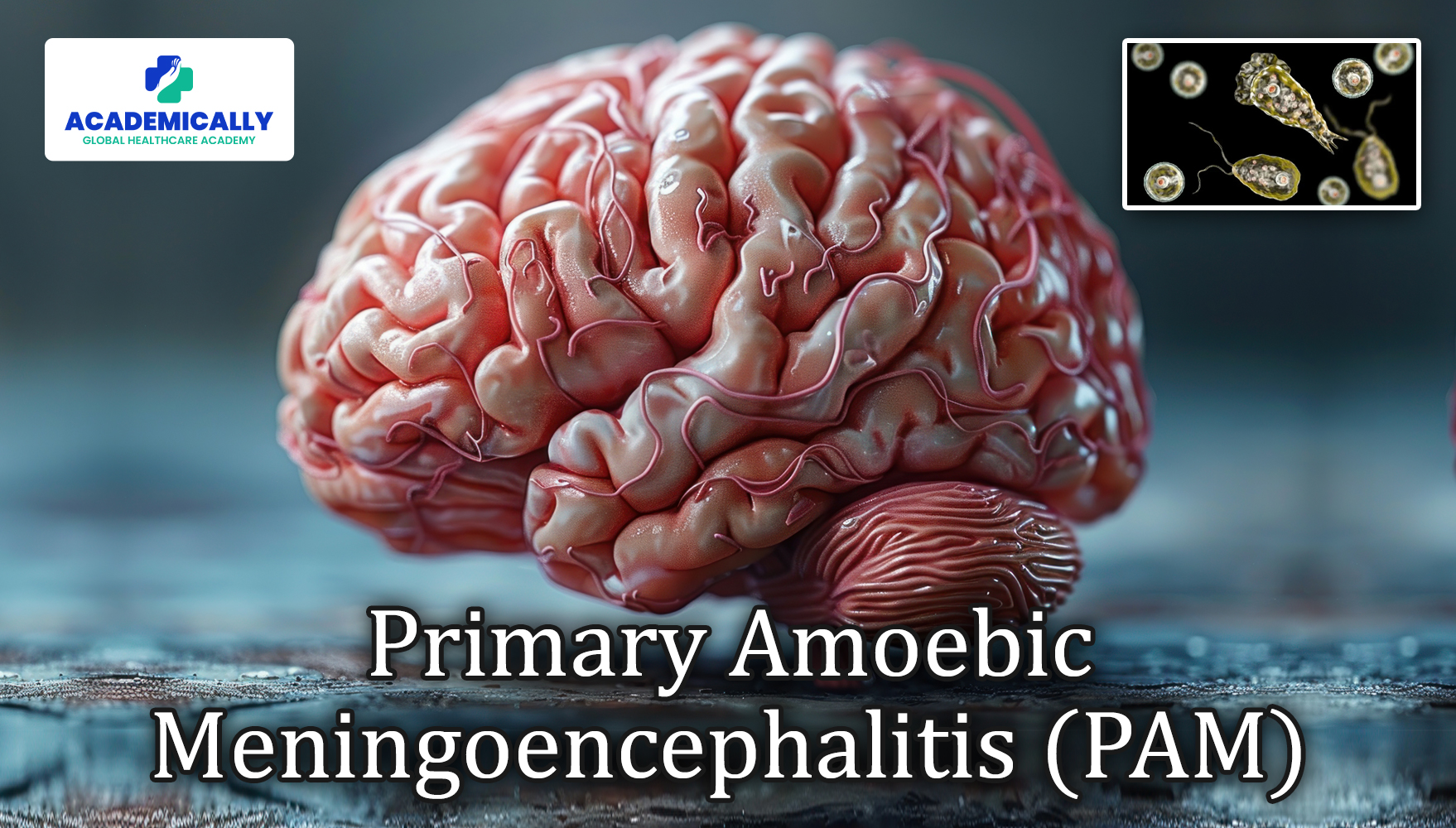What is Primary Amoebic Meningoencephalitis (PAM)?
PAM is an infection of the brain and the meninges (the protective membranes covering the brain and spinal cord). The condition is caused by Naegleria fowleri, an amoeba found in warm freshwater bodies such as lakes, hot springs, and poorly maintained swimming pools. The amoeba enters the human body through the nose, typically when people swim or dive in contaminated water. From there, it travels to the brain, causing a rapid and destructive infection.
Causes and Risk Factors
The primary cause of PAM is the amoeba Naegleria fowleri. While the amoeba is commonly found in warm freshwater environments, infection is rare. Several factors can increase the risk of contracting PAM:
- Swimming in Warm Freshwater: Engaging in water activities in warm freshwater lakes, rivers, and hot springs can increase the risk of exposure to the amoeba.
- Nasal Exposure: The amoeba enters the body through the nasal passages, so activities that forcefully introduce water into the nose, such as diving, can heighten the risk.
- Warm Climates: PAM is more commonly reported in regions with warm climates where water temperatures are higher, supporting the growth of Naegleria fowleri.
Symptoms of PAM
The symptoms of PAM typically appear within 1 to 9 days after exposure to the amoeba. The early symptoms can mimic those of bacterial meningitis, making initial diagnosis challenging. Early symptoms include:
- Severe headache
- Fever
- Nausea and vomiting
- Stiff neck
As the infection progresses, more severe neurological symptoms develop, such as:
- Confusion and disorientation
- Loss of balance and coordination
- Seizures
- Hallucinations
- Coma

Diagnosis
Diagnosing PAM can be challenging due to its rarity and the similarity of its early symptoms to other forms of meningitis. A combination of clinical evaluation and laboratory tests is used to confirm the presence of Naegleria fowleri.
- Cerebrospinal Fluid (CSF) Analysis: A lumbar puncture (spinal tap) is performed to obtain CSF, which is examined under a microscope for the presence of the amoeba.
- Polymerase Chain Reaction (PCR) Testing: PCR can detect the genetic material of Naegleria fowleri in CSF or other samples.
- Imaging Studies: MRI or CT scans of the brain may be used to assess the extent of brain inflammation and damage.
Treatment
PAM is a medical emergency requiring immediate intervention. The mortality rate is extremely high, but early diagnosis and aggressive treatment can improve survival chances. Treatment options include:
- Antifungal Medications: Amphotericin B is the primary drug used to treat PAM. It is administered intravenously and, in some cases, directly into the brain.
- Antibiotics and Antiparasitic Drugs: Combinations of other medications, such as rifampin, azithromycin, and miltefosine, may be used alongside antifungal treatment.
- Supportive Care: Intensive care is often required to manage symptoms and support vital functions, including mechanical ventilation for patients with severe respiratory distress.
Prevention
Preventing PAM involves minimising exposure to Naegleria fowleri:
- Avoid Warm Freshwater: Limit activities such as swimming or diving in warm freshwater bodies, especially during high-temperature periods.
- Nasal Protection: Use nose clips or hold your nose shut when participating in water activities in potentially contaminated water.
- Maintain Pools Properly: Ensure swimming pools and hot tubs are properly chlorinated and maintained to prevent amoeba growth.
Conclusion
Primary Amoebic Meningoencephalitis (PAM) is a rare but devastating infection caused by the brain-eating amoeba Naegleria fowleri. Awareness of the risks, early symptoms, and preventive measures is crucial to reduce the occurrence and improve outcomes for those affected. While the infection is rare, the high mortality rate emphasises the importance of early diagnosis and aggressive treatment. Continued research and public education are essential in the fight against this deadly disease. For more such latest updates on all things related to healthcare, visit Academically.


